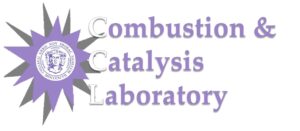Current Occupation: ExxonMobil Research & Engineering
- Education:
- PhD, Columbia University, Thesis:“” (2010)
- MS in Earth Resources Engineering, Columbia University, Thesis:“CO Cleanup Train for High Purity Hydrogen Production” (2006)
- Laurea in Chemical Engineering, Universita’ di Genova, Italy; Thesis:“The local Kinetics of Perfluorinated Sulfonate Membranes for PEM Fuel cells”. (2001)
- Teaching:
- Teaching Assistant for the Departmental Undergraduate Engineering Laboratory The program includes a gas turbine, wind turbine, fuel cell and a three-way catalysis experimental module.
- Publications/Presentations:
- Peer Reviewed Journals:
- Barrai, F., Castaldi, M.J., “Experimental investigation of a JP8 Fuel Processor: ATR and CO-cleanup train.” Ind. Eng. Chem. Res., 49 (4), 2010, 1577–1587. (Abstract)
- Castaldi, M.J; Barrai, F., “An investigation into water and thermal balance for a liquid fueled fuel processor.” Catalysis Today 2007, 129, (3-4), 397-406. (Abstract)
- Barrai, F.; Jackson, T.; Whitmore, N.; Castaldi, M.J, “The role of carbon deposition on precious metal catalyst activity during dry reforming of biogas.” Catalysis Today 2007, 129, (3-4), 391-396. (Abstract)
- Conference Presentations/Posters:
- Barrai Federico, Castaldi Marco J., “Catalyst Supports for SelectiveCatalytic Reactions: Wire Mesh Screens vs. Monoliths” 21st North American Catalysis Society Meeting, San Francisco, CA, 2009
- Barrai Federico, Castaldi Marco J., “Autothermal Reforming of JP8:transitory analysis and fate of sulfur species”, Henry Krumb Symposium, New York, NY
- Barrai Federico, Castaldi Marco J., “A Comparison of Monoliths andShort Contact Time Supports for Selective Catalytic Oxidation: Performance and Steady-State Multiplicity”, AIChE 2008 Annual Meeting, Philadelphia, PA
- Barrai Federico, Castaldi Marco J., “Autothermal Reforming of JP8Using a 10 kWth Finned Wall Reactor”, AIChE 2008 Annual Meeting, Philadelphia, PA
- Barrai Federico, Castaldi Marco J., “Catalyst Supports for SelectiveCatalytic Reactions: Wire Mesh Screens vs. Monoliths”, 20th North American Catalysis Society Meeting, Houston, TX, 2007
- Barrai Federico, Castaldi Marco J., “Trace Contaminant Removal ViaEnhanced Mass Transfer Selective Catalytic Reaction”, WTERT Conference, New York, NY, 2006
- Peer Reviewed Journals:
- Description of Research:
- Autothermal Reforming (ATR) of JP8 Fuel:
Much of the recent work on Fuel Processors is focused on the employment of surrogate fuels, biofuels, gasoline and diesel and to a lesser extent devoted to JP8 fuel. JP8 is a mixture of alkanes, cycloalkanes and arenes in the C8 -C16 range, containing ~102 ppm of fuel bound sulfur. Since JP8 is the fuel selected by the Department of Defense (DoD) and North Atlantic Treaty Organization (NATO) to be the only battlefield fuel for all units, a better understanding of its properties and behavior is paramount. Apart from being used for producing a suitable feed to Fuel Cells, Fuel Processors can be utilized for bio-oil upgrading, as well for combustion enhancement in internal combustion engines.
For this investigation a novel catalytic-fins reactor was built in partnership with ATK/GASL and BASF. This investigation has the objective to shed light into catalyst ignition in the presence of sulfur as well as the impact and fate of sulfur species at steady state. - The Interaction Between Mass Transfer Processes and Chemical Kinetics in Selective Catalytic Reactors:
My dissertation work is focused on understanding the mechanism responsible for the performance in the high temperature regime of the preferential oxidation of CO in the presence of hydrogen (PROX). This is investigated experimentally by the employment of reactors exhibiting different flow geometries (short contact time screens and monoliths) and by TGS/DSC analysis. The theoretical impact of various parameters is investigated with a 2-phase, one-dimensional model with heat and mass transfer resistances for the PROX reactor.
- Autothermal Reforming (ATR) of JP8 Fuel:

